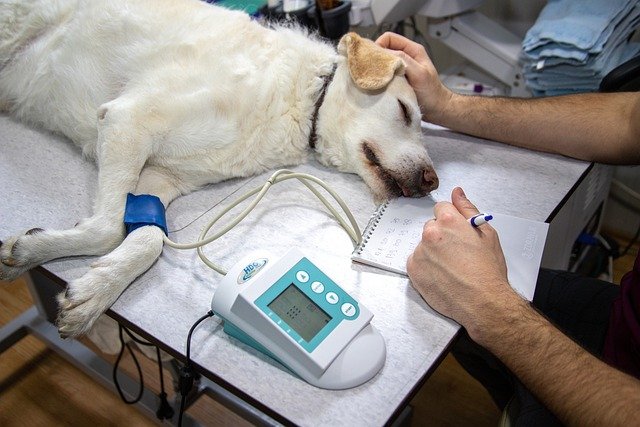Understanding Pet Insurance: Coverage, Costs, and Considerations
Pet insurance has become increasingly popular as veterinary costs continue to rise. For many pet owners, having insurance provides peace of mind that they won't face difficult financial decisions during a pet health emergency. However, navigating the various policy types, coverage options, and pricing structures can be overwhelming. This guide breaks down everything you need to know about pet insurance to help you make an informed decision for your furry family member.

What Types of Pet Insurance Policies Are Available and What Do They Cover?
Pet insurance generally falls into three main categories: accident-only, accident and illness, and comprehensive coverage.
Accident-only policies are the most basic and affordable option. These plans typically cover emergency care related to unexpected injuries, such as broken bones, cuts requiring stitches, ingestion of foreign objects, and poisoning. They don’t cover any illness-related treatments or preventive care.
Accident and illness policies are the most common type of pet insurance. These plans cover not only injuries but also diagnosed illnesses like cancer, infections, digestive problems, and hereditary conditions (though pre-existing conditions are almost always excluded). This coverage typically includes diagnostics, surgeries, medications, hospital stays, and specialist care related to covered conditions.
Comprehensive plans offer the most extensive coverage, including everything in the accident and illness policies plus some routine and preventive care. Depending on the specific plan, this might include annual wellness exams, vaccinations, dental cleanings, flea and tick prevention, and sometimes even behavioral therapy.
What Factors Influence the Cost of a Pet Insurance Plan?
Several variables affect how much you’ll pay for pet insurance:
Species and breed play a significant role in determining premiums. Dogs typically cost more to insure than cats, and certain breeds predisposed to specific health conditions may have higher premiums. For example, breeds prone to hip dysplasia or heart conditions often cost more to insure.
Your pet’s age is another major factor. Premiums increase as pets get older because they’re more likely to develop health issues. Many companies have age restrictions for new policies, often not accepting pets over a certain age (typically 10-14 years).
Geographic location impacts pricing as veterinary costs vary considerably across different areas. Urban pet owners generally face higher premiums than rural ones due to the higher cost of veterinary care in cities.
Coverage options and policy structure directly affect pricing. Policies with higher deductibles, lower reimbursement percentages, or annual coverage caps will cost less than more generous plans. Most plans allow you to customize these elements to fit your budget.
What Are the Differences Between Basic and Comprehensive Coverage?
The distinction between basic and comprehensive coverage comes down to both breadth and depth of protection.
Basic plans (typically accident-only or limited accident and illness) focus on emergency situations and major unexpected events. These plans have more exclusions, potentially lower annual limits, and may not cover specialized treatments or ongoing care for chronic conditions. However, they come at a significantly lower monthly premium.
Comprehensive plans cast a wider safety net, covering not only emergencies and illnesses but also routine care that basic plans exclude. These plans often have fewer exclusions, higher coverage limits, and may include benefits for alternative therapies, behavioral issues, and hereditary conditions. The trade-off is a substantially higher monthly premium.
The most significant practical difference is how each type handles preventive care. Basic plans typically exclude all routine care, while comprehensive plans often include or offer add-ons for wellness visits, vaccinations, and preventive medications.
Why Do Some Pet Owners Choose Insurance for Routine Care?
While adding wellness coverage increases premium costs, many pet owners find value in this option for several reasons.
First, wellness coverage encourages preventive care by offsetting its costs. When routine visits and vaccinations are partially covered, owners are more likely to maintain regular checkups, potentially catching health issues before they become serious and expensive.
For pet owners with young animals, wellness plans can be particularly valuable during the first year when puppies and kittens need multiple vaccinations, spaying/neutering, and several check-ups. These costs can add up quickly, making wellness coverage financially advantageous.
Additionally, some owners prefer the predictability of monthly premiums versus irregular veterinary expenses. Budgeting a set monthly amount may be easier than handling occasional larger bills, even if the total annual cost is similar or slightly higher.
What Should You Review Before Signing Up for a Pet Insurance Policy?
Before committing to a pet insurance policy, carefully evaluate these critical factors:
Waiting periods vary significantly between providers, ranging from a few days for accidents to 30 days or more for illnesses. Some conditions, like cruciate ligament issues, may have extended waiting periods of six months or longer. Understand these timeframes before signing up.
Pre-existing condition policies are crucial to review. Nearly all pet insurance plans exclude pre-existing conditions, but how they define and handle these conditions differs. Some providers distinguish between curable and incurable pre-existing conditions, potentially reinstating coverage for curable conditions after a certain period with no symptoms.
Reimbursement methods can significantly impact your out-of-pocket costs. Some insurers reimburse based on actual veterinary bills, while others use predetermined benefit schedules. Additionally, understand whether reimbursement percentages apply before or after your deductible.
Annual limits, deductibles, and exclusions require careful attention. Some policies have per-condition deductibles rather than annual ones, while others may have per-incident, annual, or lifetime maximum payouts. Read the fine print about specific exclusions, particularly for breed-specific conditions, behavioral issues, and hereditary problems.
How Much Does Pet Insurance Typically Cost?
The cost of pet insurance varies widely based on multiple factors, but understanding average price ranges can help with budgeting.
| Coverage Type | Average Monthly Cost (Dogs) | Average Monthly Cost (Cats) | Typical Annual Deductible |
|---|---|---|---|
| Accident-Only | $15-$25 | $10-$15 | $100-$250 |
| Accident & Illness | $30-$50 | $15-$30 | $200-$500 |
| Comprehensive | $60-$100 | $30-$60 | $200-$1,000 |
Prices, rates, or cost estimates mentioned in this article are based on the latest available information but may change over time. Independent research is advised before making financial decisions.
Premium costs increase with pet age, with senior pets often costing 2-3 times more than young adult animals. Additionally, optional add-ons like wellness care typically add $10-$25 per month to your premium.
Deductible choices significantly impact monthly premiums. Selecting a higher deductible (such as $500 or $1,000 instead of $100) can reduce monthly costs by 15-30%. Similarly, choosing a lower reimbursement rate (70% versus 90%) can decrease premiums by 10-20%.
When comparing costs between providers, ensure you’re evaluating plans with similar coverage limits, deductibles, and reimbursement percentages to make a fair comparison.
Conclusion
Pet insurance can be a valuable safety net for pet owners, potentially saving thousands of dollars during a pet health crisis while providing peace of mind. The right policy depends on your pet’s specific needs, your budget, and your personal risk tolerance. By understanding the different types of coverage, cost factors, and policy details, you can make an informed decision about whether pet insurance is right for you and your furry companion.




